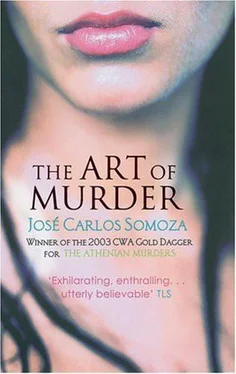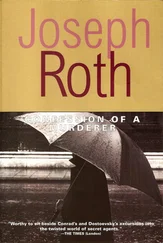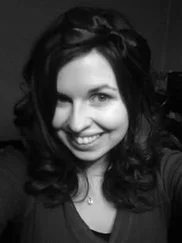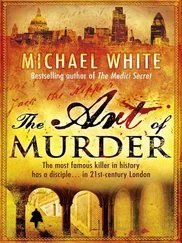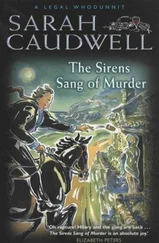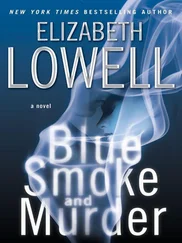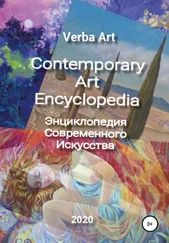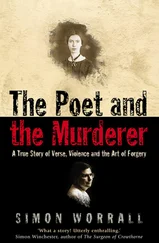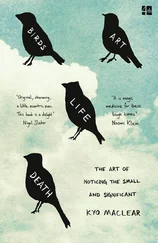Jose Somoza - Art of Murder
Здесь есть возможность читать онлайн «Jose Somoza - Art of Murder» весь текст электронной книги совершенно бесплатно (целиком полную версию без сокращений). В некоторых случаях можно слушать аудио, скачать через торрент в формате fb2 и присутствует краткое содержание. Жанр: Триллер, на английском языке. Описание произведения, (предисловие) а так же отзывы посетителей доступны на портале библиотеки ЛибКат.
- Название:Art of Murder
- Автор:
- Жанр:
- Год:неизвестен
- ISBN:нет данных
- Рейтинг книги:4 / 5. Голосов: 1
-
Избранное:Добавить в избранное
- Отзывы:
-
Ваша оценка:
- 80
- 1
- 2
- 3
- 4
- 5
Art of Murder: краткое содержание, описание и аннотация
Предлагаем к чтению аннотацию, описание, краткое содержание или предисловие (зависит от того, что написал сам автор книги «Art of Murder»). Если вы не нашли необходимую информацию о книге — напишите в комментариях, мы постараемся отыскать её.
Art of Murder — читать онлайн бесплатно полную книгу (весь текст) целиком
Ниже представлен текст книги, разбитый по страницам. Система сохранения места последней прочитанной страницы, позволяет с удобством читать онлайн бесплатно книгу «Art of Murder», без необходимости каждый раз заново искать на чём Вы остановились. Поставьте закладку, и сможете в любой момент перейти на страницу, на которой закончили чтение.
Интервал:
Закладка:
A fortnight after that first meeting, during one of the sketching sessions, something happened. Vicky was drawing her outline, and was gently moving her hand soaked in flesh-coloured paint down the outside of Clara's thigh. When she reached the knee, Clara could feel the pressure of her hand, the protracted silence, the tingling sensation on her painted skin.
'Do you like women, Clara?' Vicky asked all of a sudden, calm as could be. ‘I like some women,' Clara replied, equally calmly.
She was naked, half-painted in a variety of colours as she squatted on her haunches in Vicky's studio. Vicky was wearing her work clothes: an unbuttoned, paint-covered shirt and track-suit bottom. Her hand was still on Clara's knee. 'Have you had any experience with women?' 'Aha,' said Clara. 'And with men.'
There was nothing strange about this for a canvas, and both of them knew it. It was easy for a painting to love another body, whoever it belonged to: the barriers were unclear, the limits became blurred. 'Would you like to sleep with me?' Vicky asked.
Clara liked the soft guttural tone of her voice, and the way Vicky's cheeks fired up much more than her own. 'Yes,' she said.
Vicky looked at her and went on painting. Her hand moved smoothly distributing the flesh colour on Clara's knee. Clara had no idea when it happened. One moment there was art, technique, a painter at work; the next, there was feeling, heavy breathing, a lover's embrace. And the brushstrokes suddenly became caresses.
Later on, when the relationship between the two women was a reality, Vicky reproached her for having responded so matter-of-factly. She used it against Clara whenever she was angry with her. 'You said yes as though you were being asked to go hang-gliding at night. You said yes as though you were being asked to meet a Physics Nobel laureate. OK, let's give it a try, you said. There was no real love or sincerity in your declaration.' 'Maybe there was no real love,' Clara retorted, 'but I was being sincere.'
'You have no feelings,' Vicky declared. 'I try to hide them: I'm a work of art,' replied Clara. And added, 'And you are an artist, so you find it impossible to hide them. You even invent them if you don't have any.'
Sit Down went on permanent exhibition in Provence. It was an exhausting period: they only had a few hours in which to rest, eat and recover before they had to climb up on the scaffolding again. The length of time they had varied, because it depended entirely on the life of the purchaser, on the visitors or the parties he had organised. The maintenance team was excellent, but the two women ended up completely exhausted. Nevertheless, it was a wonderful experience for Clara. That same year, Vicky painted her in another five works, the early ones with another woman, then on her own: The Kiss. Double or Quits, Sweet Nothings, and The Black Dress. Outside work, Vicky's obsession with Clara knew no bounds: she called her in the morning, at night, cried on her shoulder, revealed intimate secrets about how cold her father was (he was a surgeon) or her mother's (a university professor) lack of interest in her career as a painter. Some days she considered herself 'a crappy daddy's girl'; on others she was the unfortunate victim of a 'marriage of snobs'. But all that was forgotten as soon as she began to work. In bed she might be a vulnerable soul, but with her hands covered in paint she became a firebird who could draw wonderful things on a woman's body. But Vicky the human being and Vicky the artist were not in watertight compartments. While Vicky the human being fell in love with the models for her works of art, Vicky the artist used that love to paint them. It was characteristic of her, but Clara could not fathom out which came first: her temperament or her way of working.
2004 was the year of Vicky, for Clara at least: a rushing torrent she either had to escape from or let herself be carried away by. Vicky was one of those people who, like candles, consume themselves the more light they give off. The worst of it was her jealousy. Especially since at that time, there was no reason for it. Clara had left Gabi Ponce, her first love as well as her first painter, and was living alone in the loft in Augusto Figueroa. She was no longer seeing either Alexandra or Sofia Lundel, two women friends she had occasionally shared a bed with. And she had not yet met Jorge Atienza. Yet Vicky was capable not only of inventing feelings but motives as well. One night she created a scandal in a restaurant where they were dining because an Italian woman painter had asked Clara to work in an art-shock together with three other female canvases. Vicky told her not to accept, and when Clara refused she threw her cutlery on the floor and attacked the maitre, who, like a good shepherd looking after his flock, had come over attentively. A few hours later, she called Clara to make up: 'I was drunk, forgive me.' Then, without warning, it was Vicky the artist who took over: ‘I wanted to tell you that your face today in the restaurant… My God, you were so pale when I shouted at you… Clara, please let me use that pallor… Those eyes of yours when you were staring at me today…'
She was inspired. She finished her new painting in three weeks. It was Clara, painted in ivory white with cerulean shadows, lying face down on a velvet cloak, exactly the same material as the suit she was wearing that first afternoon they met, with her face the natural shade of her disgust. Vicky was thinking of calling the work Sweet Nothings. During the hyperdramatic rehearsal they played out the scene in the restaurant as they remembered it. The painter wanted to recapture the fleeting paleness of Clara's cheeks, but Clara was uneasy about mixing art and real life. In the end, Vicky got angry again and started to insult her. All of a sudden she stopped in the middle of her insults and clasped Clara's face in her hands. 'That's it! You've gone pale again! That's exactly what I'm looking for!' she shouted, beside herself. Vicky the artist was back in control.
One day, Clara complained about the way she abused real emotions to paint with. Vicky gave a strange smile.
'I'd do anything for art, sweetie,' she told her. 'Anything. I couldn't care less about anything but art: not emotions or justice, or pity, family health, love or money… Well…' she hesitated, 'perhaps money is an exception. Art is money.'
Sweet Nothings was bought by a Madrid collector at double its list price. Clara was on show in his house for a whole month. Early in 2005, Vicky tried to kill herself with a heroin overdose.
This was not Clara's fault, but that of her new love, Elena Valero, who Clara had worked with on Instant. The day they were taking her into the intensive care unit in La Paz, it was announced that the Van Tysch Foundation had awarded her their Max Kalima prize for the totality of her work. Groggy from the effects of her oxygen mask, Vicky heard the news from a nurse. When she recovered, she declared she had also rediscovered her emotional stability. Although she was planning another work with Clara for the end of the year, she no longer phoned her as often. Then after Strawberry they had not seen each other again. Clara was unsure what she felt about her: was she in love with Vicky, or was it admiration for her talent? The truth was that although she wanted to, she could not forget her. Sometimes she pictured herself lying on the velvet cloak in the Sweet Nothings collector's room, one knee drawn up under her stomach, with the heel pointing down to her sex, her eyes shut and face livid with that 'pallor the colour of disgust' that Vicky had managed to produce in her. Perhaps this was all the painter had left her when she disappeared from her life: the feel of velvet, and her bloodless cheeks.
So she pulled the velvet suit out of the cupboard and threw it on the bed. Then she found another beige jersey and trousers, which reminded her more of Jorge because she had worn them during the early days of her relationship with him.
Читать дальшеИнтервал:
Закладка:
Похожие книги на «Art of Murder»
Представляем Вашему вниманию похожие книги на «Art of Murder» списком для выбора. Мы отобрали схожую по названию и смыслу литературу в надежде предоставить читателям больше вариантов отыскать новые, интересные, ещё непрочитанные произведения.
Обсуждение, отзывы о книге «Art of Murder» и просто собственные мнения читателей. Оставьте ваши комментарии, напишите, что Вы думаете о произведении, его смысле или главных героях. Укажите что конкретно понравилось, а что нет, и почему Вы так считаете.
